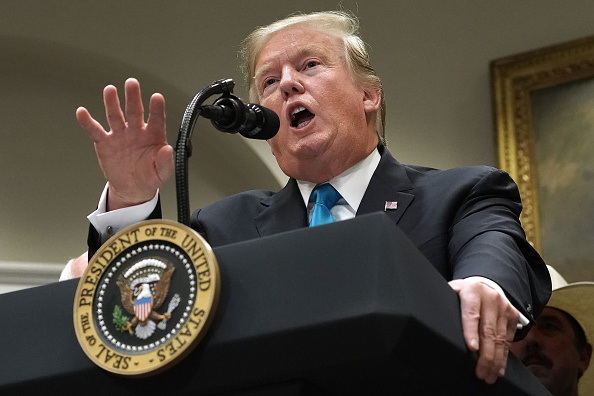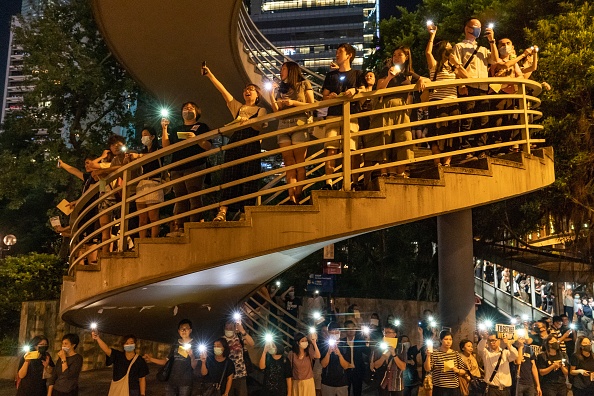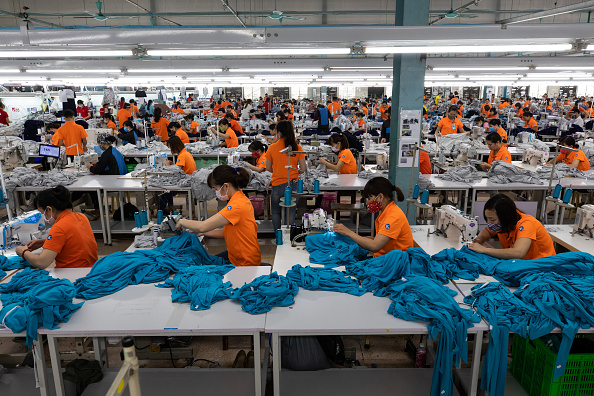
 Tit for Tat
Tit for TatChina and the United States may be in a trade war, but there is no shortage of trading barbs and punitive measures. The US-China trade war took another turn this week after Beijing vowed to raise tariffs on an additional $75 billion of American goods. Angered by this, President Trump fired off a Tweet Friday evening that the US would raise existing tariffs against China to 30% beginning October 1. His message comes after an earlier call to American companies "to immediately start looking for an alternative to China." Stocks dropped over 600 points after his Tweets. Soybean futures took a big hit as well, as the US Department of Agriculture claims that China has only purchased half the agreed upon amount of soybeans so far this year, a violation of its commitment. President Trump has threatened further sanctions on Chinese imports to start in September, and China has retaliated by halting purchases of all agricultural produce.
And on Wednesday, just weeks after President Trump said China is not doing enough to crack down on the trafficking of fentanyl into the United States, the Treasury Department imposed sanctions on three Chinese citizens that stand accused of trafficking synthetic opioids. Meanwhile, Chinese state media hit back at the accusations, saying that the responsibility to prevent the trafficking flow lies with the United States alone.
But wait, there's more: China is threatening its own round of sanctions on U.S. firms sending arms to Taiwan if the Trump administration pursues its plans to send $8 billion worth of American-made F-16 fighter jets to the island. Beijing says this arms sale, the fourth from the Trump administration to Taiwan, would violate previous U.S. promises to China. China has made similar demands and threats in the past, to little avail.
 Fake News
Fake NewsYoutube has joined Twitter and Facebook in accusing the Chinese government of deception and promoting disinformation in portraying Hong Kong demonstrators as "terrorists" and "radical forces" on their platforms. Twitter and Facebook have taken down thousands of allegedly fake accounts which they say have spread fake information to promote Beijing's narrative. Youtube has now also disabled 210 channels, saying that it was used to spread disinformation.
Meanwhile, the Hong Kong protesters have embraced social media to promote their messages and coordinate activity, while concealing their identities and protecting their anonymity. While Western social media channels are mostly banned in China, the government use of these channels throughout the protests is largely aimed at a Hong Kong population that frequents social media widely.
 Finding Factory Floors
Finding Factory FloorsThe US expressed its concerns over China's alleged meddling into the oil and gas activities in the South China Sea this Thursday. A State Department statement called the return of multiple Chinese survey ships into the waters of the Spratly Islands an effort to "intimidate other claimants [of the South China Sea] out of developing resources in the South China Sea." Vietnam has been conducting oil exploration projects in the hotly contested waters of the South China Sea, much to China's objection.
Vietnam has also vied for a competitive position as a global manufacturing hub, aspiring to the same production capacity as China. The US-China trade war has sent global manufacturers to look for alternatives to China, but they're finding that Vietnamese factory floors are not ready for primetime due to labor shortages, poor safety certifications, and inferior machinery. Vietnam is still mostly a rural country with a much smaller population and overextended ports exacerbate the difficulties.
With no end in sight, President Trump has ordered U.S. companies to find alternative manufacturing destinations to China. Despite it being expensive and time-consuming, manufacturers will nevertheless try to diversify their supply chains, but China is likely to continue to dominate the playing field in the near term.
Prepared by China-US Focus editorial teams in Hong Kong and New York, this weekly newsletter offers you snap shots of latest trends and developments emerging from China every week, while adding a dose of historical perspective.
- 2019-08-17 Slowdown Ahead?
- 2019-08-09 Yuan on the Rocks
- 2019-08-02 Ratcheting Up the Crisis
- 2019-07-26 Playing Defense
- 2019-07-19 “Stain of the Century”
- 2019-07-12 Whichever Way the Wind Blows
- 2019-07-04 A Gentlemen’s Agreement
- 2019-06-28 A Truce on the Horizon?
- 2019-06-22 Three’s A Crowd
- 2019-06-14 Battle for Hong Kong
- 2019-06-07 Panda Diplomacy
- 2019-05-31 Trade Diversions
- 2019-05-25 Farm Aid or Band Aid?
- 2019-05-17 Risky Business
- 2019-05-10 Two Steps Forward, Two Steps Back
- 2019-05-03 The Final Laps?
- 2019-04-26 The Great Turbine Caper?
- 2019-04-19 Sowing Seeds of Tension
- 2019-04-12 Slow or Steady?
- 2019-04-05 The Last Mile is The Hardest
